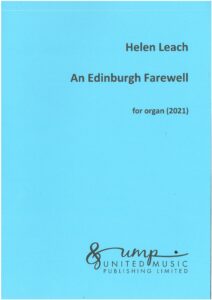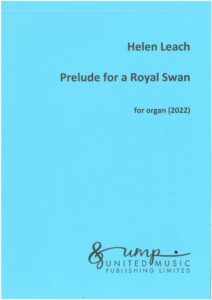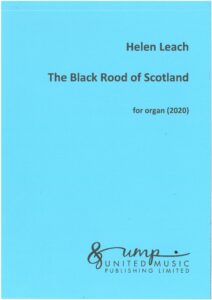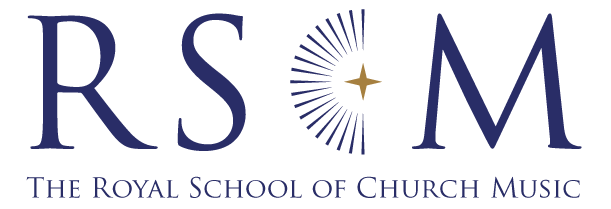Reviews of CDs
* Worth hearing
** Recommended
*** Essential listening
CHORAL CDs
**
WHAT JOY SO TRUE:
THOMAS WEELKES
Anthems, Canticles and Consort Music by Thomas Weelkes ♦ Choir of Chichester Cathedral / Rose Consort of Viols / Timothy Ravalde (chamber organ), Thomas Howell (organ solos) / Charles Harrison ♦ Regent Records REGCD571
Like William Byrd, Thomas Weelkes (1576–1623) died 400 years ago this year. Alas, Weelkes was – in modern day parlance – a bit of a lad. His time as organist and Informator Choristarum at Chichester Cathedral was turbulent. As the CD notes relate, the cathedral authorities complained among other things about his drunkenness; he was ‘a notorious swearer and blasphemer’. Coming up to date, the grace, tranquillity and indeed intimacy of the performances on this CD belie what went on all those years ago. This is a fine sequence of 24 pieces, including canticles, anthems and verse anthems, some accompanied either by chamber organ or by viols. There are two organ voluntaries and four pieces played by the Rose Consort of Viols. Accompanying this CD are some excellent and detailed programme notes from which we learn that, because of missing or damaged partbooks, some reconstruction of pieces was necessary – the Sixth Service setting of the evening canticles and the verse anthem Christ rising again being cases in point; the latter brings this serene sequence to a close.
Stuart Robinson
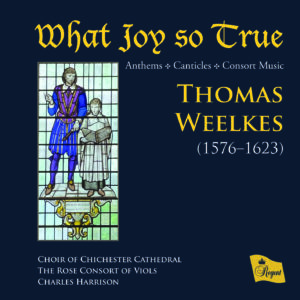
**
SIR CHARLES VILLIERS STANFORD: REQUIEM
Carolyn Sampson (soprano), Marta Fontanals-Simmons (alto), James Way (tenor), Ross Ramgobin (bass) / University of Birmingham Voices / CBSO / Martyn Brabbins ♦ Hyperion CDA68418
Following a triumphant performance in Birmingham, the University of Birmingham Voices and CBSO commit to disc this neglected work by Charles Villiers Stanford (1852–1924). It is a spectacular performance of the composer’s magnum opus. The University of Birmingham Voices, trained by Simon Halsey, are stars of the show, with impeccable diction, wonderful blend and excellent dynamic contrasts. Even at the quietest dynamic, the clarity of text and flawless pitching are impressive. Brabbins marshals his forces expertly: the orchestra provides a sensitive accompaniment that never overpowers the choral forces. The soloists, headed by Carolyn Sampson, make valuable contributions, although, to my ear at least, their vibrato doesn’t gel particularly with the choir. Performances of the work are rare; I hope this magnificent account rescues this masterpiece from obscurity and encourages choirs to programme it.
Ian Munro
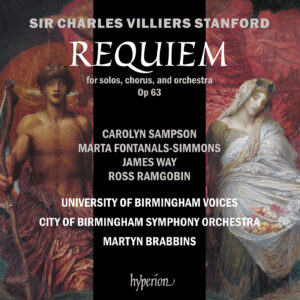
**
WILLIAM BYRD: MASS FOR
FIVE VOICES & OTHER WORKS
The Gesualdo Six / Owain Park ♦ Hyperion CDA68416
Here we enter the clandestine Catholic world that William Byrd (c.1540–1623) inhabited, juggling work as a royal Elizabethan composer alongside practice in secret of his own outlawed tradition. This is an excellent collection of Byrd’s settings of Latin texts. The centrepiece is the Mass for Five Voices, interspersed with motets such as Tristitia et anxietas and Emendemus in melius. The set concludes with the Lamentations of Jeremiah.
Accompanying the CD are excellent notes detailing the context in which these works were composed and performed, along with musical analysis. Here is not the forum to discuss the pronunciation of Latin, but curiously the group opts for continental pronunciation: for instance the hard J in ‘Jesu’ in Ave verum corpus, and ‘benedissimus te’ in the Gloria. Perhaps they are recreating what may have been current pronunciation in England in Byrd’s time. As someone used to performing conventional ‘church’ Latin, it jarred a little. That said, this CD is another thoughtful compilation, with effortless and sensitive singing.
Stuart Robinson
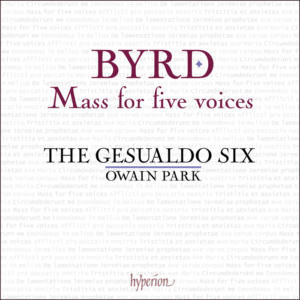
**
VAUGHAN WILLIAMS,
MACMILLAN & TAVENER: CHORAL WORKS
Choir of Westminster Abbey / Peter Holder (organ) / James O’Donnell ♦ Hyperion CDA68420
On this CD you can hear the timeless modality of Vaughan Williams, the ‘wide canvas’ of sonorities of MacMillan and the unmistakable Orthodox influence on Tavener’s unique writing. The CD (much of it recorded in a large, north London church) begins with an unhurried performance of Vaughan Williams’ Mass in G minor, followed by his O taste and see, first sung at the coronation of Elizabeth II in 1953. That’s complemented by MacMillan’s Who shall separate us, performed at the late Queen’s state funeral last year. His Mass of St Edward the Confessor – recorded here for the first time – is followed by a powerfully dissonant A Special Appeal for choir and organ, a setting in English of words addressed to the military by Oscar Romero, the Salvadorean bishop assassinated while celebrating Mass in 1980. It’s a piece that captures the passion of Romero’s admonition, ‘I beseech you, I order you in the name of God, stop the repression!’ Tavener’s Collegium Regale setting of the evening canticles and his Song for Athene bring this very listenable sequence to a close.
Stuart Robinson
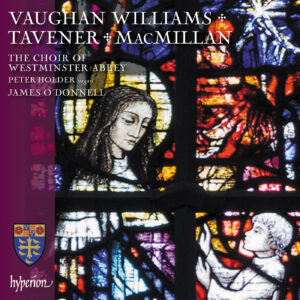
SOLO TREBLE CD
*
RISE UP
Luca Brugnoli (treble) / Alice Platten (soprano) / Mark Shepherd (keyboards) / The Hennessey Brown Music Collective / Robert Lewis ♦ Convivium Records CR084
BBC Young Chorister of the Year 2022 runner-up Luca Brugnoli presents this recital of music that is both familiar and unfamiliar. Brugnoli has a pure tone and his diction is good; pitching isn’t a problem, and phrasing is generally excellent. In a couple of places he runs out of vocal support and struggles to get through to the end of a phrase, while at times the Hennessey Brown Music Collective can be a little overpowering. The arrangements made for this CD, some of which are duets with Alice Platten, include old favourites such as Franck’s Panis angelicus, Rutter’s The Lord bless you and keep you and Mozart’s Ave verum corpus, sitting alongside Joni Mitchell’s Both sides now, Gordon Sumner’s Fields of gold and Amanda McBroom’s The Rose. This young singer, whose voice hasn’t broken, is clearly at the start of a promising career; I look forward to following his progress.
Ian Munro
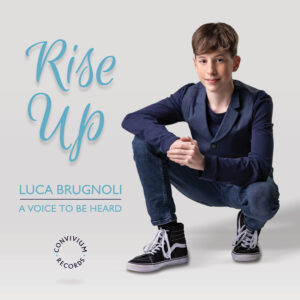
ORGAN CDs
***
CARNIVAL
Francesca Massey plays the organ of St Edmundsbury Cathedral ♦ Priory PRCD1247
Thomas Hewitt-Jones’s bouncy and effervescent Carnival launches this fun CD of exciting and virtuosic lesser-known organ showstoppers. The exciting syncopations, jazzy harmonies and cascades of notes make this an exciting disc. Jehan Alain’s Deux danses à Agni Yavishta are a more tranquil listen. The four contrasting movements of Petr Eben’s Sunday Music are given energetic, spirited performances allowing the magnificent organ of St Edmundsbury Cathedral to shine and for Francesca Massey to revel in the multitude of timbres and registrations. There is an impressive dynamic range and impeccable rhythmic detail. Jean Roger-Ducasse’s Pastorale is a huge workout for organ and organist; it receives a magnificent account, with all the colours, rhythmic dexterity and various moods on display. Ad Wammes’s Vallée des danses brings this disc to a joyous conclusion.
Ian Munro
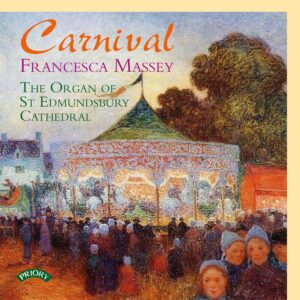
***
SIR EDWARD BAIRSTOW: THE COMPLETE ORGAN WORKS
Daniel Cook plays the Harrison and Harrison organ of Durham Cathedral ♦ Priory PRCD1248
Edward Bairstow (1874–1946) might be better known for his choral compositions, but this disc provides worthy testament to his skill as a composer for the organ. The dramatic Prelude in C, with its cascading semiquavers and punchy chords, provides a spectacular opening to an excellent recording. Daniel Cook gives committed performances and enjoys exploring the wide variety of colours that Durham’s mighty Harrison and Harrison organ can produce. The Sonata in E flat is a highlight of this disc; its three characterful movements include a cheeky yet explosive central Allegro giocoso. Meditation and Nocturne provide moments of calm and are beautifully atmospheric. The Three short preludes are charming miniatures for organ that receive spirited performances. This recital provides a fitting retrospective of Bairstow’s organ compositional output, superbly played by Cook.
Ian Munro
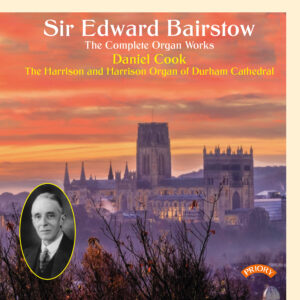
DVDs
*
BACH’S MISSING PAGES: AN EXPANDED ORGELBÜCHLEIN
Sietze de Vries plays the organs of the Martinikerk, Groningen and the Petruskerk, Leens ♦ Fugue State Films 3-disc pack FSFDVD016
This is the second and latest release in a planned trilogy of DVDs featuring the organ music of J.S. Bach. I reviewed the first (Bach and Expression) in CMQ, March 2023. There are seven 30-minute films, along with two CDs exploring Bach’s Orgelbüchlein – the so called ‘Little Organ Book’ of 46 Lutheran chorale preludes, mostly composed between 1708 and 1717 during Bach’s years as court organist in Weimar. Bach originally planned a collection of 164 chorale preludes based on hymns from the church year, but in the original manuscript there are a large number of pages with just their headings and no music underneath. Sietze de Vries not only plays all the existing works but also improvises chorale preludes on 46 of the titles Bach missed first time round – and most stylishly he does it. In the fifth film, de Vries claims that today’s organists are ‘score-dependent’; in other words, the art of improvisation isn’t as prevalent as in Bach’s time. Maybe he has a point. Through the films, de Vries demonstrates the timbres of two historic Dutch organs of contrasting size, both based on the north German organ tradition with which Bach would have been familiar. With some fine Baroque organ casework and two period consoles, this is a fascinating watch and listen.
Stuart Robinson
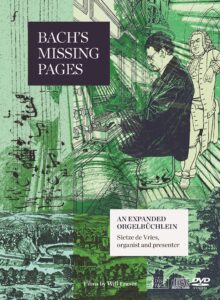
Books
A YOUNG PERSON’S GUIDE TO VOCAL HEALTH
Olivia Sparkhall
Compton Books 52pp. PB 978-1-909082-71-7 £10.00
The past few years have seen the health and well-being of professional musicians addressed in numerous articles, conferences and webinars. Olivia Sparkhall’s book, A Young Person’s Guide to Vocal Health, provides practical advice and information to a group of musicians for whom the subject is of equal and vital importance. She states in her introduction that her aim is to help to keep a healthy voice and to explain what is going on when it seems to have gone wrong. After describing briefly what the voice is and how it works, subsequent chapters cover matters including drinking sufficient water; what foods to avoid and why; staying well and getting better; allergies, asthma and medications; and giving one’s best performance. There is helpful and reassuring material for boys experiencing changing voices. The unhappy results of smoking, vaping and much else besides are fully described.
If you’ve wondered why it is so hard to sing after swimming or if the new braces on your teeth are affecting your voice, Olivia Sparkhall’s slim book seeks to answer these and many other questions within 40 pages. It also includes a glossary and details of further reading, including books and websites. It is warmly recommended and should be in the music folder of every young singer and on the bookshelf of every choral director.
Carl Jackson
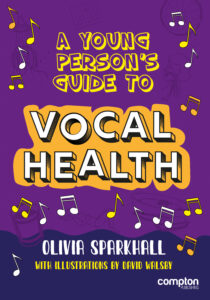
Reviews of printed music
CHORAL MUSIC
E Easy
M Medium
D Difficult
EVENSONG MUSIC
COME & SING EVENSONG!
selected and edited by Simon Lole mostly SATB with and without keyboard
RSCM RAB88 £11.95
This is an extraordinarily good-value collection of four sets of responses, seven sets of evening canticles and 13 anthems, running to 224 pages at a generous format. The motivation was to provide all the material needed for Come and Sing Evensong events, complete with an order of service along with performance notes. But for individual church choirs singing Book of Common Prayer evensong, whether regularly or occasionally, it is also a valuable resource.
The preces and responses include, as well as the standard ferial ones, a new edition by Edward Tambling of Ayleward’s set and an arrangement by Tambling for four-part SATB of those by William Smith. John Sanders’s set is based, from opening response to final amen, on the seven-note Dresden amen and written for the RSCM choirs of the Gloucester diocese. Here it is joined by his Lord’s Prayer that Peterborough commissioned to be sung with these responses.
Canticles include four popular settings by Brewer (in D), Stanford (in B flat) using Jeremy Dibble’s edition, Heathcote Statham (E minor) and Walmisley (D minor). To those are added Joanna Forbes L’Estrange’s King’s College Service, the plainsong-derived Magnificat and Nunc dimittis from Philip Moore’s Third Service and a unison setting (with an optional second part), Philip Wilby’s Ripon Service. All are accompanied by organ.
Anthem composers range from Tallis and Tye, both born at the start of the 16th century, to Piers Maxim (The Chorister’s Prayer) and Joanna Forbes L’Estrange, who contributes Faith, hope and love, a three-part SAMen setting of the ever-popular 1 Corinthians 13 text. That anthem has a piano or organ accompaniment, as has Bob Chilcott’s Just as I am that I think choirs will particularly enjoy learning. There are big pieces, such as S.S. Wesley’s ‘The Lord has been mindful of us’ extracted from Ascribe unto the Lord and Wood’s O thou, the central orb – see page 24 of CMQ, September 2023 for more about that. There are also pieces that are favourites of smaller choirs, such as Martin How’s Fairest Lord Jesus. An odd one out is Mozart’s Ave verum corpus, the only Latin-texted piece, and with words that do not seem an obvious choice for evensong. Add compositions by Batten, Stanford, Richard Shephard and Peter Nardone and the result is a wide-ranging and satisfying selection that might form the core of many choirs’ evensong repertoire.
Julian Elloway
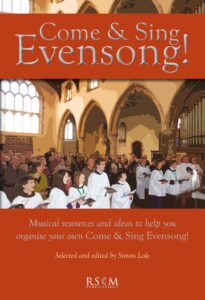
ADVENT
ANGELUS AD VIRGINEM [M]
arr. Stephen Cleobury
SATB with divisions and organ
NEVER WEATHER-BEATEN SAIL [M/D]
Simon Jackson
A solo, SATB with divisions Encore Publications 020732 £2.95; 020744 £2.65
You can find Stephen Cleobury directing his Angelus ad virginem arrangement on YouTube – search for ‘Carols from Kings 2015’. It is marked ‘joyfully’ but it is more reflective than the Willcocks arrangement and reserves the organ for linking passages and accompanying the final verse.
Simon Jackson frames and accompanies his setting of Thomas Campion’s Never weather-beaten sail (ending ‘O come quickly, glorious Lord, and raise my sprite to thee’) with a Swedish folksong, Trilo, that calls out to fishermen returning from sea (‘Here he is, close to shore’). It is clever and effective – recommended for choirs seeking a different approach to a familiar text.
ARISE, SHINE [M/D]
Sarah MacDonald SATB with divisions
CREATOR OF THE STARS
OF NIGHT [M]
Charlotte Baskerville SATB
Encore Publications 020708,
020743 £2.10 each
Here are two contrasting approaches to the Advent office hymn in J.M. Neale’s translation, ‘Creator of the stars of night’. Sarah MacDonald uses the original plainchant as a ‘legato, distant’ background to the excitement of Isaiah’s ‘Arise, shine; for thy light is come.’ She depicts the expectation of the glory of the Lord, the anticipation of which finally subsides into the opening plainsong motif.
Charlotte Baskerville has composed her own melody, opening with a repeated rising phrase that is used in each verse. Within a slow, homophonic texture, key words and phrases are highlighted; it reaches a climax in the doxology on ‘all glory be’. This is an Advent piece that creates an atmosphere and gently draws the listener in.
Stephen Patterson
CHRISTMAS CAROLS
CAROLS FOR CHOIRS 6
compiled and edited by Bob Chilcott and David Hill
SATB with some divisi and soli, unaccompanied or with organ or piano Oxford paperback 978-0-19-355111-4
£21.95; spiral bound 978-0-19- 355112-1 £26.95
Few publications are so central to the choral world as the Carols for Choirs series; it’s wonderful to see the series evolve as we welcome Carols for Choirs 6. Bob Chilcott and David Hill pick up the curating of this new collection, which, as ever, includes inventive arrangements, some of old favourites, alongside brand-new music that will bring joy to singers and listeners.
This is very much a book for choirs. You will not find congregational-style carols here: stick to its predecessors for those. What you will find is a selection full of ‘vibrancy, energy, and diversity’, using the words of the editors. All pieces but one are by living composers, mostly from the UK and North America. This fills me with excitement. Parish choirs and cathedral choirs have plenty to draw on, but there is also music for choral society, community choir, youth choir, and something more challenging for my auditioned chamber choir for the festive season.
I have divided the selection into three main categories: vibrant, lyrical and atmospheric. Of the ‘vibrant’ carols, Villancico Xicarrero by Spanish composer Fernando Taberner starts in a lively 7/8, keeping the rhythmic feel alive in more extended 3/4 refrains – this award-winning carol should be a real crowd-pleaser. I also look forward to trying The Unexpected Early Hour by Reena Esmail. Taken from her set The Winter Breviary, it marries the daily prayers through the winter solstice with an Indian classical raga that matches that time of day.
Looking at the more ‘lyrical’ offerings, choirs and audiences alike will love A child of hope by Ryan Murphy, which should be a favourite of community choirs with easy-to-learn harmonies and simple accompaniment. Similar can be said for Joanna Forbes L’Estrange’s A Present for the Future, which sets the story of the Magi alongside a prayer for our planet’s future. A new Carols for Choirs would not be complete without something by John Rutter, and his carol dedicated to the memory of Sir Stephen Cleobury, All the stars looked down, reminds us of his mastery in this genre.
Of the ‘atmospheric’ selection, my chamber choir will enjoy the more challenging Alma Redemptoris Mater by Nico Muhly. Road to Refuge by Errollyn Wallen sees Mary and Joseph as refugees, portraying the dangers they faced on their journey to Bethlehem. It will provide a more contemplative, thought-provoking angle to your carol service.
There are new versions of some popular texts: David Hill’s Adam lay ybounden, Cecilia McDowall’s In dulci jubilo, two contrasting settings of There is no rose by Ben Parry and Lucy Walker, and what will be a favourite in Bob Chilcott’s new version of The first Nowell. Choirs that enjoy a cappella singing will love Suzzie Vango’s exciting arrangement of Gaudete and B.E. Boykin’s take on the Coventry Carol. There are organ fireworks in Jerrick Cavagnaro’s arrangement of Masters in this hall and Stuart Nicholson’s I saw three ships, and the organ is used to good effect in Laura Hawley’s new piece The Christ-child. The piano comes to the fore in Sarah Quartel’s On this Silent Night and Joel Thompson’s The Rose.
There are a couple of opportunities for singers to explore languages other than English and Latin: A Ukrainian Alleluia is perhaps better known as Carol of the Bells, but is included here with its traditional text. In this electronic age, I hope there will be assistance for singers in the pronunciation of this and Villancico Xicarrero, so that choirs can approach these texts with confidence.
Costing over £20, Carols for Choirs 6 is a big investment, even with multi-buy offers, but it is worth it in an age where presenting mixed programmes dominated by white male composers is not really justifiable. I look forward to introducing my choirs to the wealth of new Christmas repertoire that Carols for Choirs 6 brings to the festive table.
Ben Sawyer
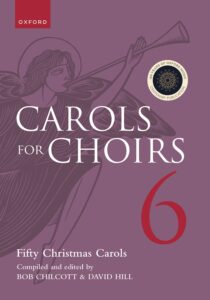
THREE CHRISTMAS CAROLS [M]
George Arthur SATB
Universal Edition UE21724 £10.95
In CMQ, March 2023, Ian Munro wrote enthusiastically about a recent CD of George Arthur’s choral music, including these three carols. Of a Maiden is an atmospheric setting of the ‘I sing of a maiden’ text, culminating in a ‘very still’, triple-piano, homophonic setting of the concluding ‘Mother and maiden’ sentence. Susanni, by contrast, is an energetic, rhythmic setting with repetitions of ‘Eia’, ‘susanni’ and ‘Alleluia’, sometimes passed from voice to voice: a well-crafted centrepiece of the set. Balulalow begins as a gentle lullaby but accelerates and crescendos into a joyful ‘And sing that true Balulalow’ climax. A solo final two bars, reprising ‘O my dear heart’, concludes this unusual and effective sequence of carols.
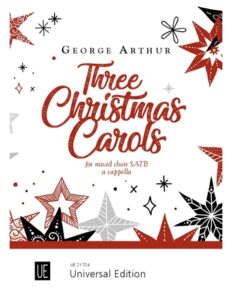
THE WORLD’S DESIRE [E] A LITTLE CHILD THERE IS YBORN [M]
Christopher Maxim SATB
Paraclete Press PPM02173 $1.70; PPM02184 $2.90
Chesterton’s poem The World’s Desire (starting ‘The Christ-child lay on Mary’s lap’) is given a simple but sensitive setting by Christopher Maxim. With minor/major fluctuations and a compound-time lilt, it has the feeling of a folk carol. In contrast, A little child there is yborn mixes 7/8 and 9/8 time signatures, each verse culminating in a rising series of Alleluias. The vocal lines would be gratifying to sing. The tempo direction ‘Piacevole’ suggests a relaxed feeling, despite the rhythmic bounce – but an intensification of Alleluias after the last verse provides a strong and effective finish.
CHRISTMAS SURPRISES [M–D]
Volume 1: German Christmas Carols Volume 2: Christmas Spirituals
arr. Howard Arman SATB with divisions
Breitkopf & Härtel ChB5380 €16.90; ChB5381 €19.90
English conductor Howard Arman has lived and worked in Germany and Austria for the last 40 years, most recently as director of the Bavarian radio choir – he is well placed to provide arrangements of Austro-German repertoire for English-speaking choirs. Many of these arrangements are not easy, starting with the opening number of Volume 1, Lasst uns froh und munter sein, if taken at the printed metronome mark. They are also either for double choir or require all voices to divide. Resonet in laudibus is one of the most popular of carols in Germany, sung to those words or to ‘Joseph, lieber Joseph mein’; the setting here starts by dividing the melody between two separate SATB choirs, which come together in repeated waves of eight-part counterpoint. Stille Nacht, on the other hand, has an arrangement of touching simplicity.
The extended settings of Christmas spirituals include Mary had a baby and Little David, and one combining two spirituals. Arman describes how, as a child, he discovered early recordings made of communal singing at a prayer meeting in Kansas; in his arrangements he has successfully aimed to make ‘harmonies, rhythmical figures, interjections and freely sung solo passages sound more improvised when sung, than written’. The introductions (in German and English) to both volumes provide introductions to the repertoire and useful performance notes. The sung texts are all in original languages, therefore German or Latin for Volume 1 and English for the spirituals in Volume 2.
James L. Montgomery
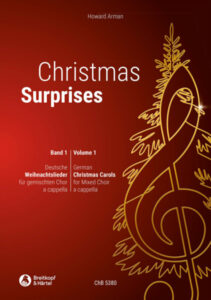
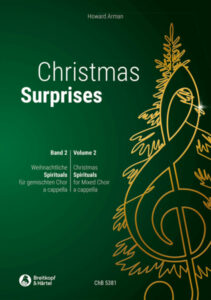
CHRISTMAS CANTATAS
O HEILIGE ZEIT / O HOLY TIME [M/D]
FROHLOCKET, IHR VÖLKER [M/D]
Johann Kuhnau, ed. David Erler SATB choir and soloists and strings (Frohlocket also with trumpets and timpani)
Breitkopf & Härtel Vocal score EB32119 €13.90; EB32120 €15.90
In Sunday by Sunday 104 (March 2023), I reviewed the new publication of a cantata for Pentecost by Johann Kuhnau (1660–1722), J.S. Bach’s predecessor as cantor at St Thomas, Leipzig. We now have two Christmas cantatas by the same composer, written during his Leipzig years. Again, the juxtaposition of different moods and the characterization of individual words are notable – and forward-looking. In O heilige Zeit, three choruses alternate with solo arias and recitatives over seven short movements: the total duration is no more than 15 minutes. The music of the opening ‘O holy night’ text is repeated at the end, as though lost in wonder.
Frohlocket, ihr Völker is more substantial, with six longer movements lasting about 25 minutes. Two SATB choruses frame movements for tenor and alto soloists, the latter having an ‘Aria de Ciaconno’ with an ostinato bass line. The vocal scores include a brief introduction (in English) to Kuhnau’s life and work; full critical introductions and commentaries, in German only, are included in the full scores, published as PB32119 and PB32120.
James L. Montgomery
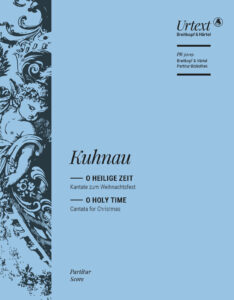
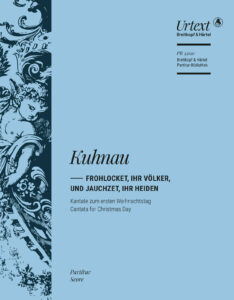
ORGAN MUSIC
E Easy
M Medium
D Difficult
MANUALS ONLY
SIX ORGAN CONCERTOS BOOK I (NOS. 1–3) [D]
Georg Christoph Wagenseil ed. David Patrick
Fitzjohn Music Publications £12.00
Georg Wagenseil (1715–77) was a Viennese court composer who never visited England, although his concertos were published by Walsh in London, c.1761, as Six Concertos for the Harpsicord or Organ with Accompanyments for two violins and a bass. David Patrick has here provided the first three of the set. Each concerto is in three movements: a through-composed Allegro in common time in the first two and 2/4 in the third is followed by a Largo slow movement, concluding with a Tempo di Minuetto in 3/8 with semiquaver triplets. The first two concertos, in F major and C major respectively, cover eight pages each, but the third has a far longer opening movement in 2/4 running to some 315 bars.
There are plentiful dynamic markings, easier to bring off on a chamber organ with a shifting mechanism than on today’s instruments. Few ornament signs are printed: they include a tr, which occurs with some frequency, often followed by a written-out turned close, and a turn sign with a stroke through it, probably a mordent, which occurs in the slow movement of No. 1. Each concerto is fully figured, with indications for tutti and solo. They are demanding pieces, with a varied texture ranging from two voices to a more chordal left hand. The slow movements are particularly expressive, including demisemiquaver triplets and hemidemisemiquavers, demanding a cautious tempo. These concertos have much to offer the player and the listener; I await the second volume with enthusiasm.
John Collins
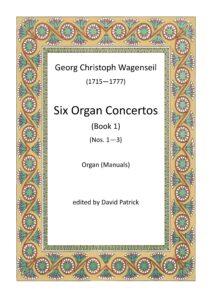
A FAVOURITE CONCERTO IN D MAJOR [D]
John ‘Christmas’ Beckwith ed. David Patrick
Fitzjohn Music Publications £6.00
John Beckwith (c.1759–1809), was organist of St Peter Mancroft, Norwich and of the cathedral, and left a set of six voluntaries in addition to this four-movement ‘Concerto for Organ, Harpsichord or Piano Forte’. It opens with an Allegro in common time introduced by three full chords marked Larghetto. The first section has repeat marks but not the second. There are several passages with crossed hands, sometimes in thirds, considerably increasing the difficulty. The second movement is a plaintive and expressive 2/4 Largo in A minor, marked for Swell Diapason and also Oboe, containing double-dotted quavers and plenty of hemidemisemiquavers as well as cadential flourishes in small notes. The third movement is a binary-form Minuet in the tonic major in crotchets and quavers, and the closing movement is a Rondo Allegretto in 2/4; a written-out cadenza marked Solo, with demisemiquavers shared between the hands, is interpolated before the final repetition of the theme.
Much of the writing is in two parts, with occasional thickening and left-hand octaves, sometimes in the form of murky basses, and with enough rhythmic variety. A pleasant enough addition to the repertoire, it requires nimble fingers and careful articulation.
John Collins
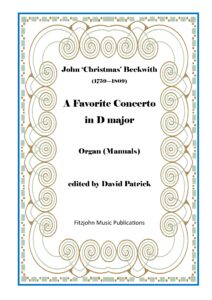
VOLUNTARIES AND RECITAL PIECES
AN EDINBURGH FAREWELL [M] PRELUDE FOR A ROYAL SWAN [M] THE BLACK ROOD OF
SCOTLAND [M]
Helen Leach
United Music Publishing 979-0-2244-2002-9 £10.99;
979-0-2244-2007-4 £12.99;
979-0-2244-2012-8 £10.99
These pieces for organ by Scotland- based composer Helen Leach mark various recent events. Composed with her husband in mind, Simon Leach, organist of Edinburgh’s Canongate Kirk (where the Royal Family worship when in Edinburgh), this trio of pieces composed in the past three years captures the mood of these events. Canongate Kirk’s royal connections are reflected in An Edinburgh Farewell, composed in homage to Prince Philip, Duke of Edinburgh and the Prelude for a Royal Swan was composed as a reflection marking the 70th anniversary of the ascension to the throne of Queen Elizabeth II. The Black Rood of Scotland was composed for the re-opening of churches following the 2020 lockdown. These pieces are meditative in style but contain intricate syncopations and rhythmical decorations. Although less than 50 bars long, they are substantial and satisfying works. The music is well presented in each publication, with registrations indicated.
Ian Munro
